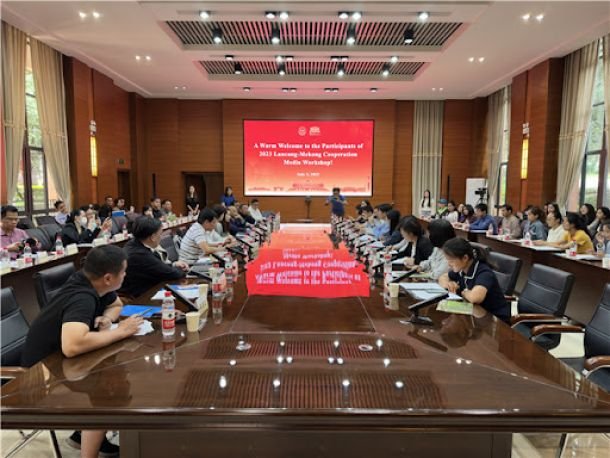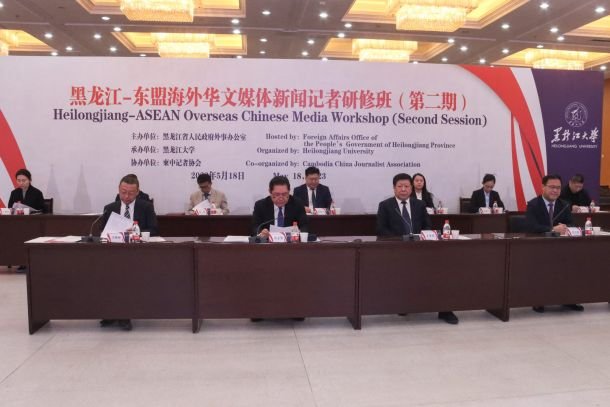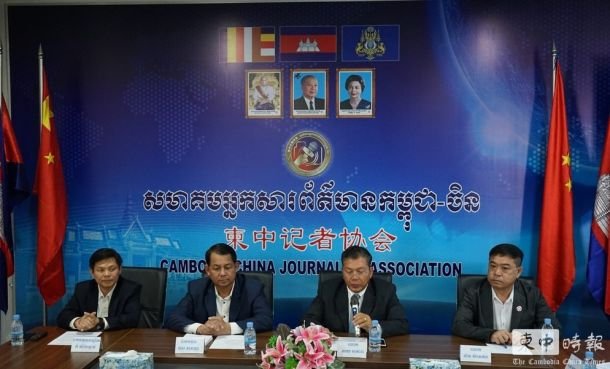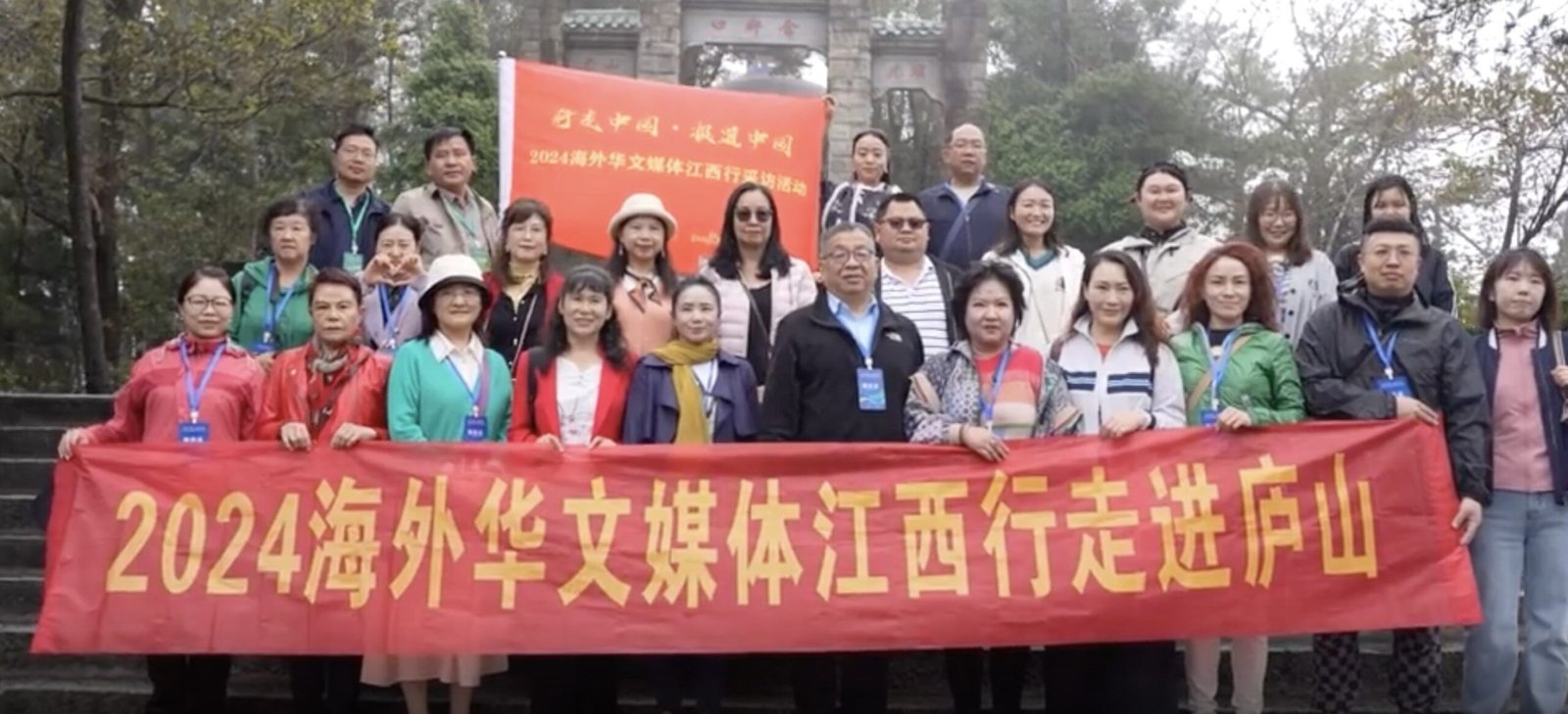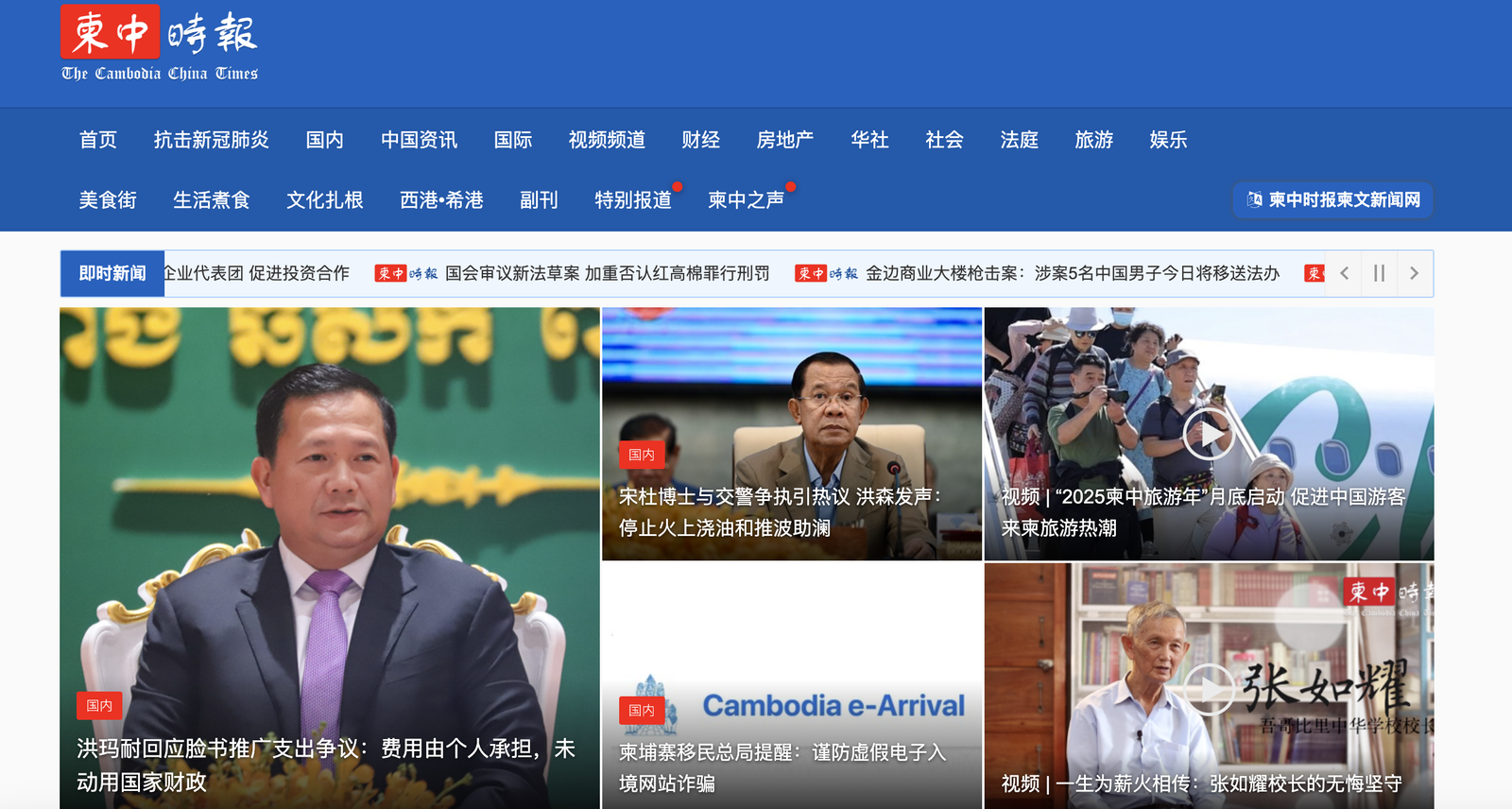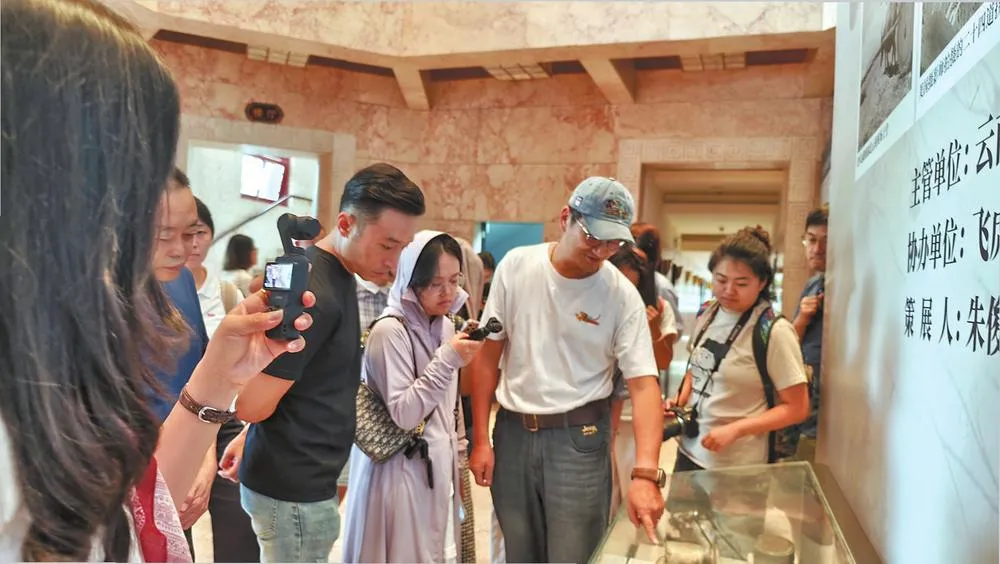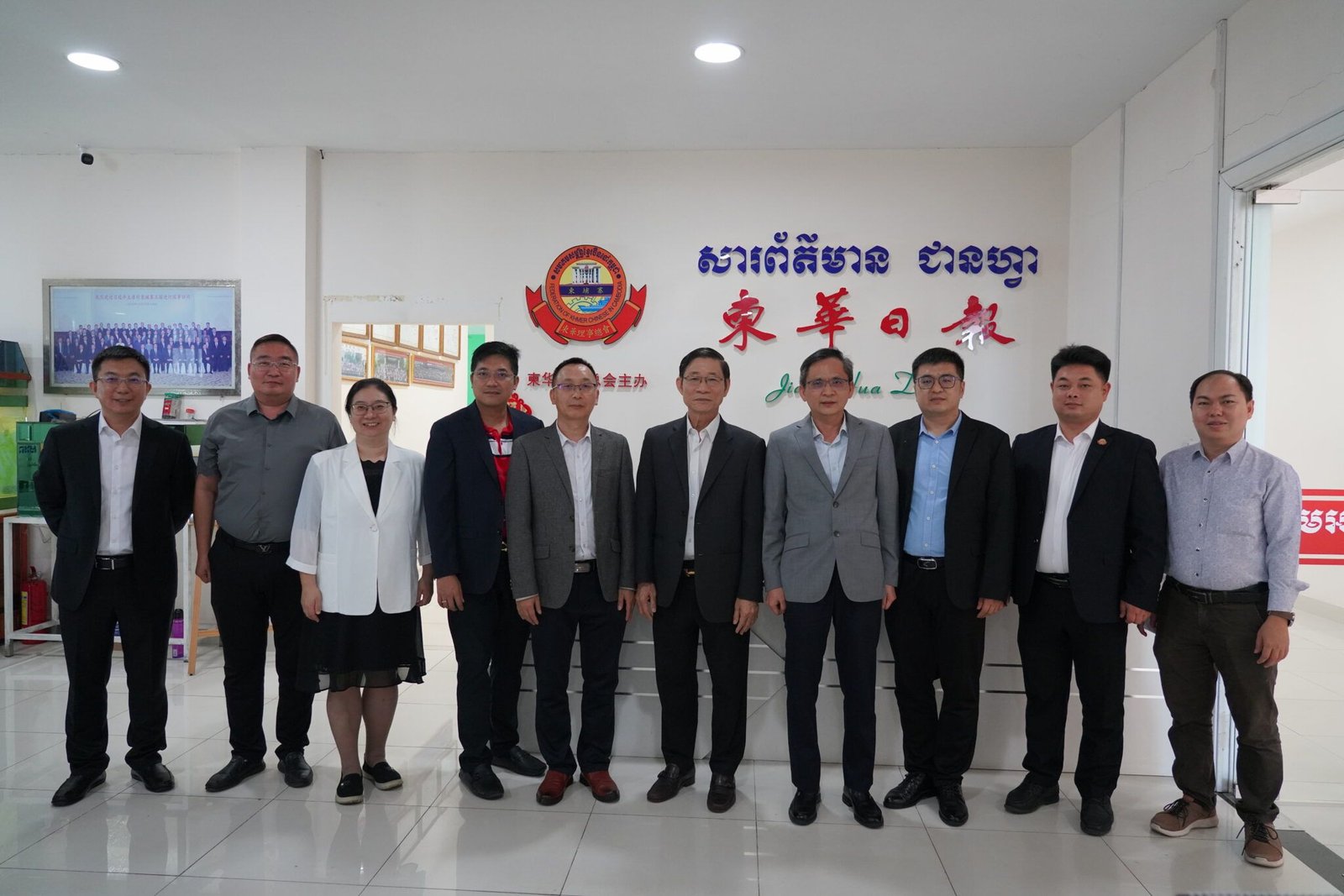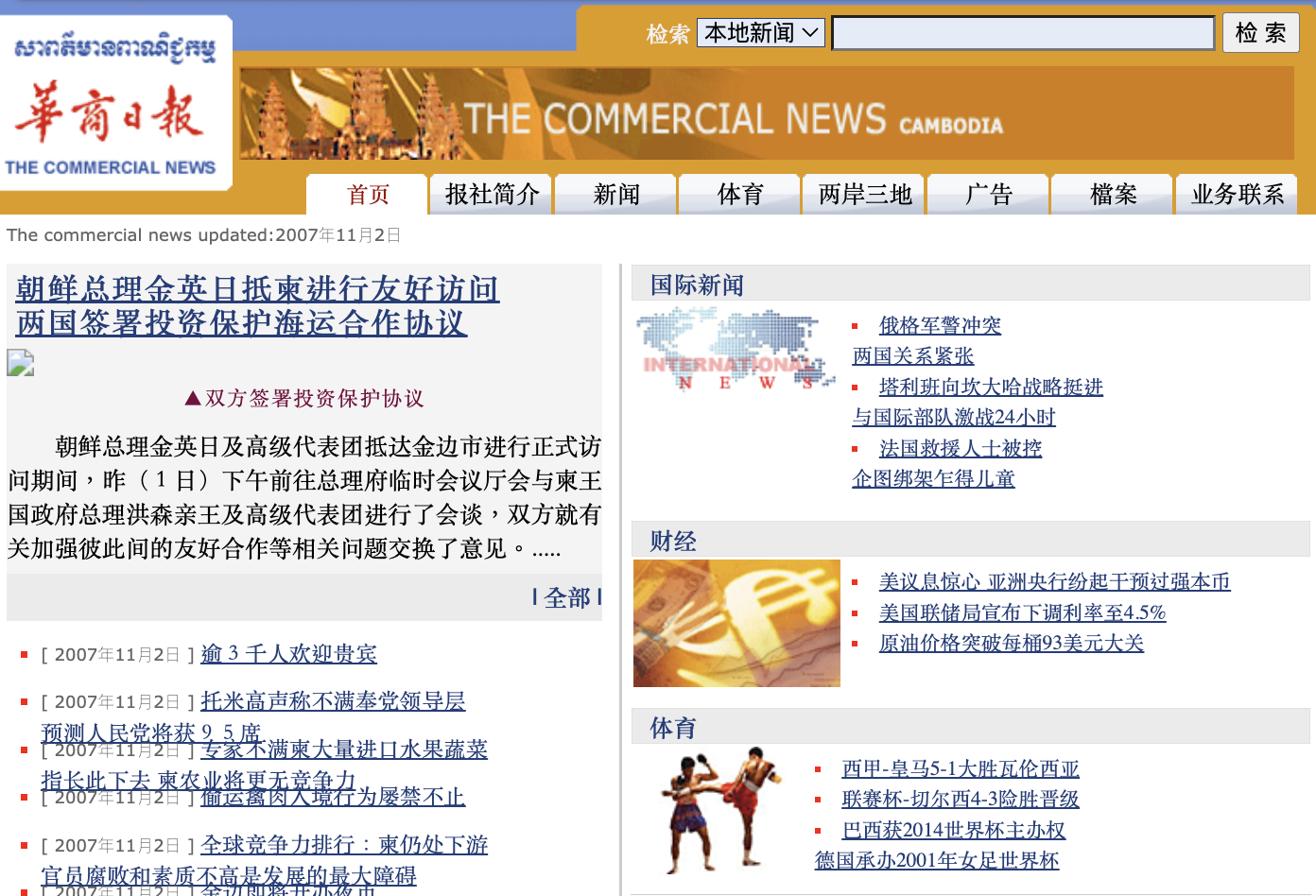Cambodia
Sinosphere
Cambodia’s ethnic Chinese community represents one of Southeast Asia’s most significant Chinese diaspora populations, though population estimates vary dramatically. Sources cite figures ranging from around 300,000, to as high as 700,000, while China’s Ministry of Foreign Affairs puts the number above one million. These estimates, however variable, represent a dramatic recovery from the devastation of the Khmer Rouge period (1975-1979), when the Chinese population fell to around 60,000.
Chinese presence in Cambodia has deep historical roots. The earliest records date to the late 13th century, when Chinese diplomat Zhou Daguan (周达观), documented Chinese settlers near Angkor while visiting King Indravarman III’s court. The Teochiu ethnic group from South China predominates among contemporary Cambodian Chinese. During French colonial rule (1863-1953), each Chinese linguistic group had a designated leader, or “chef de congregation,” who governed community schools, cultural societies and temples.
The Khmer Rouge devastated the Chinese community along with the rest of Cambodia. By some estimates, around 200,000 ethnic Chinese perished by 1979. While Chinese were not specifically targeted, many urban merchants faced brutal treatment as “capitalists” under the revolutionary regime.
Since the 1990s, Chinese identity and culture have revived dramatically in Cambodia. Academic research shows Chinese-Cambodians now dominate the country’s business community, politics and media. The community maintains strong Chinese identity associations, and new Chinese-medium schools have proliferated. In 2018, Prime Minister Hun Sen noted on Facebook the rising celebration of Chinese New Year, observing that “in the past, we did not see many people celebrating Chinese New Year, but today there are more and more.”
Today’s Chinese community includes both established Cambodian Chinese families and newer migrants from the PRC. The Association of Khmer-Chinese in Cambodia, chaired by prominent businessman Pung Kheav Se (方侨生), president of Canadia Bank, claims 140 member associations, at least 50 Chinese schools and branch offices from 25 Chinese cities and provinces.
Climate & Challenges
The ruling party maintains systematic oversight of Cambodia’s media environment. Following his succession of his father Hun Sen in August 2023, Prime Minister Hun Manet presides over a constrained press landscape, while Hun Sen continues wielding significant power as Senate president and Cambodian People’s Party leader. The BBC has reported that numerous Cambodian publications and private broadcast stations rely on political party backing, with Hun Sen and his associates maintaining control over multiple media properties despite the recent leadership change. Government-aligned outlets like Reaksmei Kampuchea (Light of Cambodia) openly support official positions and hold dominant market positions.
A systematic dismantling of independent journalism has occurred through what media freedom organizations characterize as an orchestrated state effort. The fate of Voice of Democracy (VOD) illustrates this suppression campaign. After more than two decades of pioneering investigative reporting on corruption and rights issues, the publication faced closure in February 2023 upon Hun Sen’s direct intervention. Hun Sen reportedly claimed the outlet had harmed the “dignity and reputation” of the government.
This closure followed a pattern of media shutdowns targeting independent outlets. In March 2022, Bayong Times, Khmer Cover TV, and Cambodia Today had their licenses revoked with no appeal process after publishing corruption investigations. The 2017 crackdown forced the closure of Cambodia Daily over an alleged $6.3 million dollar tax bill, while Radio Free Asia closed its Phnom Penh bureau in 2017 due to the “relentless crackdown” on media outlets.
Cambodia Press Freedom Ranking Decline
Key Findings:
- 33-place drop: From 128th (2016) to 161st (2025)
- Current ranking: 161st out of 180 countries
- Steepest decline: 2016-2019 period coinciding with government crackdowns
- Regional context: Among the worst in Southeast Asia
Source: Reporters Without Borders World Press Freedom Index
Cambodia acceded to the International Covenant on Civil and Political Rights (ICCPR) in 1992, but authorities routinely use criminal law to prosecute journalists investigating sensitive issues. These prosecutions frequently invoke Criminal Code articles 494 and 495 concerning “incitement to commit a crime.” Former Prime Minister Hun Sen exploited the COVID-19 pandemic to pass emergency legislation expanding his censorship powers.
The targeting of journalists has intensified, with environmental reporting proving particularly dangerous as an issue of urgent interest to local populations but touching on powerful state and commercial interests. In December 2024 investigative journalist Chhoeung Chheng was shot while investigating illegal deforestation in the country’s northwest and died from his wounds. His murder underscores the lethal risks facing reporters who challenge powerful interests in Cambodia’s extractive industries.
According to the 2025 World Press Freedom Index, Cambodia ranks 161st out of 180 countries, down from 151st in 2024 and representing a decline of nine spots against world countries since 2022. Reporters Without Borders notes that “the wave of closures and taming of newsrooms in 2017 and 2018 amounted to a clean sweep that deprived Cambodians of any access to information other than that disseminated by the media companies linked to Hun Sen.”
The targeting of journalists extends beyond closures to systematic intimidation. In 2014, two journalists were murdered while investigating forest logging and illegal fishing, according to Reporters Without Borders. Award-winning journalist Mech Dara was arrested in October 2024 on incitement charges for his coverage of online scamming operations and quit journalism after being released on bail. After VOD’s closure, 25 former VOD employees applied for government jobs following Prime Minister Hun Sen’s offer of government positions to the suddenly unemployed journalists.
The government has also employed sophisticated control mechanisms, including forcing the Women’s Media Centre of Cambodia to move from a popular broadcast frequency to a less accessible one in 2018, and ordering internet service providers to block news websites in the 48 hours before the 2018 election. According to the BBC, “since then, the few attempts to bring independent journalism back to life have drawn the wrath of ruling circles.”
Despite having 9.66 million internet users as of January 2024 (comprising 56.7 percent of the population), the digital space offers limited refuge for independent journalism. While social media platforms like Facebook serve 11.60 million users, the government cites this as evidence of press freedom while simultaneously pursuing legal action against journalists and citizens for posts deemed insulting. This has created what media experts describe as a “huge loophole for the people to access reliable information.”
Domestic Chinese-Language Outlets
The oldest Chinese language newspaper in Cambodia is the Commercial News (华商日报), founded in December 1993 by Chinese-Cambodian entrepreneur and Canadian citizen Pung Kheav Se (方侨生), chairman of Canadia Bank Group. The newspaper has a daily circulation of approximately 6,000 copies. According to a 2014 study, it typically contained 12 pages including front page, local news (pages 2 and 3), overseas Chinese news, entertainment, literature digest, and advertising sections. For many years, the Commercial News reported major news in Cambodia’s political, economic, cultural and educational fields, and paid particular attention to the development of Cambodia’s Chinese community and Chinese business community. According to online archives, the paper’s original Chinese-language website (www.thecommercialnews.com) operated from July 2004 until 2010, replaced from 2016-2019 by another URL (https://www.huashangnews.com/). It currently maintains its print edition, which celebrated its 31st anniversary in 2014, and a limited social media presence.
The Jianhua Daily (柬华日报), founded on August 10, 2000, serves as the official newspaper of the General Council of Chinese in Cambodia (柬埔寨中華總商會), which claims a membership of more than 500 enterprises and makes clear its dual government links, declaring that it is “registered under the leadership of the Economic and Commercial Department of the Embassy of the People’s Republic of China in the Kingdom of Cambodia and approved by the relevant departments of the Royal Government of Cambodia.”
The Jianhua Daily says it aims to provide essential news and information for Chinese nationals and overseas Chinese living in Cambodia, and describes itself as an important platform for promoting unity within the Chinese community while enhancing Cambodia-China relations — pointing to its primary role as both a diplomatic vehicle and a channel for PRC influence. At its 20th anniversary, the General Council’s chairman described the paper’s mission as promoting Cambodia-China friendship and Chinese culture (both of these being common PRC foreign policy frames). During an interview with China News Service (中国新闻社) in October 2019, a figure identified as the head of Jianhua Daily, Huang Huanming (黄焕明) described the role of the paper as an information bridge between the two countries, saying “Chinese media tell good stories about China to local overseas Chinese, convey information about Cambodia and China, and spread the friendship between Cambodia and China.” The phrase “telling China’s story well” is Xi Jinping’s official formulation for China’s external propaganda (外宣) efforts.
Another Chinese-language newspaper, the Khmer Daily (高棉日报), was launched in November 2013 by Chinese investor Cao Yunde (曹云德), a former Chinese official who invested in Cambodian mining and obtained Cambodian citizenship. Published in both Khmer and Chinese, it claimed a circulation of 2,500 copies, mostly distributed free to Cambodian parliament members and Cambodian embassies abroad. According to one editor, it defined itself as an “official newspaper” and was more openly supportive of the ruling Cambodian People’s Party than even the Jianhua Daily. The newspaper ceased updating its social media accounts in early 2020.
The Malaysian media group Sin Chew Daily (星洲日报) also established a “Cambodia edition” (柬埔寨版) in Phnom Penh in November 2000, which catalyzed a 2003 “Aid Cambodia Teacher Program” (援柬教师计划) that provided funding to local schools and sent teachers to Cambodia to support Chinese education. The edition ceased publication in October 2018.
Separately, the Cambodia-China Times (柬中时报) is a digital media venture launched by Phlong Vichet after leaving the Commercial News. Vichet, who had worked at Chinese-language newspapers in Cambodia for more than a decade, launched the online-only Cambodia China Times (also known as CC Times) in January 2018 to serve the growing Chinese investor and tourist community. In November 2019, the publication merged with the Commercial News to form the Cambodia-China Media Group (柬中文媒体集团), promoting traditional media transformation. Since its soft launch, the publication has focused on providing Chinese-language news about Cambodia and has established cooperation agreements with Chinese media outlets to enhance bilateral media exchange.
According to the Cambodia-China Times, the media group seeks to facilitate understanding between Cambodian and Chinese people, and has expanded its reach. In February 2020, it launched a Khmer-language news application described as helping Chinese readers understand Cambodia and enabling Cambodians to see the real China. The platform claims to provide information including current affairs in Cambodia and China, Cambodian Chinese community dynamics, youth issues, latest developments in Cambodia-China cooperation, and updates on Chinese enterprises in Cambodia.
Cambodia Press Freedom Timeline
Major Cases and Developments in Press Freedom
Foundation of Press Law Framework
Key Impact:
- First comprehensive media law post-conflict
- Framework later exploited for restrictions
Murder of Kem Ley
Historic Impact:
- 2 million mourners at funeral
- Case remains unsolved
- Created “climate of terror”
The Great Media Crackdown Begins
Scale of Destruction:
- 30+ radio frequencies shuttered
- Tax bills weaponized
- Coordinated attack on media
Cambodia Daily Forced Closure
Historic Significance:
- 24 years of journalism ended
- $6.3M arbitrary tax precedent
- Final headline: “Descent into Dictatorship”
Radio Free Asia Cambodia Bureau Forced to Close
Rural Impact:
- 20 years of RFA operations ended
- Rural areas lost primary news source
- Foreign correspondents dropped 150 to 30
Phnom Penh Post Sold Under Pressure
Editorial Purge:
- Editor fired immediately
- 20+ staff resigned in protest
- Last independent voice lost
China’s Media Training Program Launched
Prakas 170 Internet Control Decree
Criminal Charges Against Journalists
Legal Persecution:
- 23 journalists charged over four years
- Incitement laws weaponized
- Critical reporting criminalized
Incitement Law Weaponized During Pandemic
Pandemic Escalation:
- 3 journalists imprisoned in 3 months
- COVID emergency powers used
- International attention diverted
Voice of Democracy Shutdown
Final Chapter:
- Last major independent outlet closed
- Months before elections
- Systematic elimination completed
Arrest of Journalist Mech Dara
Generational Continuity:
- New leadership, same tactics
- International journalist targeted
- Military police used
Murder of Environmental Journalist
In addition to these traditional media outlets, newer digital platforms have emerged to meet information needs, in some cases with direct involvement from either Chinese investors or the Chinese government directly. TNAOT (柬埔寨头条), meaning “palm tree” in Khmer, offers a bilingual website in Chinese and Khmer along with a mobile app. Its mobile website mimics the format of China’s “Today’s Headlines” content platform. Rather than primarily producing original content, TNAOT focuses on aggregating and translating articles from other sources while also providing life guides, business consulting, and policy interpretation in Cambodia. The platform is operated by Koh Thmey Technology Co., Ltd. and is reportedly backed by Chinese investors, according to a CNA analysis of China’s media influence operations in Cambodia.
The pro-government Fresh News outlet, while publishing primarily in Khmer, has become increasingly aligned with Chinese interests under CEO Lim Chea Vutha (林谢武塔), who has explicitly stated his support for China and declared “If China helps Fresh News, Fresh News would be very happy.” The outlet frequently republishes content from Chinese state media including Xinhua and CGTN.
Cambodia Online (柬單网) was established in 2014 by Guangzhou Cambodian Information Technology Co., Ltd. (广州市柬单网信息科技有限公司). The platform was created by Liu Hongfei (刘洪飞). According to Liu, the platform is positioned as Cambodia’s equivalent of China’s 58.com online marketplace, which has myriad local sub-sites for listings in different communities. Liu’s Cambodia Online, with the clever URL 58.cam paying homage to its Chinese counterpart, serves multiple functions beyond those of a traditional news website.
With a busy and ad-filled design, the platform features a variety of news and information, including from Chinese media — though mirroring of PRC state narratives is not dominant — as well as local news gleaned from Cambodian sources. The site also includes sections for mutual assistance among Chinese nationals in the country, job recruitment postings, house rental advertisements, second-hand sales, and business yellow pages.
Another platform now based in Cambodia and publishing in Chinese is ASEAN Top News (东盟头条新闻网), launched by journalists from China and ASEAN countries in 2018 — but clearly launched to further Chinese state interests and narratives over professional journalism. The platform received permission from the Cambodian government to establish its headquarters in Phnom Penh the same year, and began publishing news on September 2. It collaborates with Guangxi ASEAN Internet Culture Media Co., Ltd. (广西东协互联文化传媒有限公司) to operate the ASEAN TOP App. According to the CNA study, the outlet is financially backed by a Chinese corporation called Guangxi Qifu Health Education Investment Group and publishes content from state-run Chinese outlets.
Chinese investors have also established NICE TV, a joint venture between NICE Culture Investment Group from China’s Guangxi region and Cambodia’s Interior Ministry. NICE TV broadcasts in Khmer 24 hours a day and claims to disseminate “homeland security news,” covering law enforcement activities as well as entertainment programming.
Chinese-Language Media Outlets in Cambodia
| English Name | Chinese Name | Format | Description | Link |
|---|---|---|---|---|
| Commercial News | 华商日报 | Cambodia’s oldest Chinese newspaper, founded 1993 by Pung Kheav Se | NA | |
| Jianhua Daily | 柬华日报 | Online | Official newspaper of General Council of Chinese in Cambodia since 2000 | jianhuadaily.com |
| Cambodia-China Times | 柬中时报 | Online | Media group formed 2019 through merger of Jianhua Daily and Commercial News | cc-times.com |
| Jinbianwanbao | 金边传媒网 | Online | Business-focused platform founded 2010 by Cambodia Chinese Chamber of Commerce | NA |
| TNAOT | 柬埔寨头条 | App/Online | Bilingual news aggregator and life services platform operated by Koh Thmey Technology | tnaot.com |
| Cambodia Online | 柬單网 | Online | Classified ads and news platform established 2014, Cambodia’s equivalent to “58.com” | 58cam.com |
| ASEAN Top News | 东盟头条新闻网 | Online | Regional news platform launched 2018 with headquarters in Phnom Penh | NA |
| Kampuchea Thmey Daily | 柬埔寨新时代日报 | Electronic media outlet owned by Hun Mana, Hun Sen’s eldest daughter | NA | |
| China-Cambodia Friendship Radio | 中柬友谊广播电台 | Radio | Joint venture between China Radio International and Cambodia’s National Television since 2008 | NA |
Cambodia currently has no dedicated Chinese-language television stations. Some private cable television packages include channels from mainland China, including CCTV-4 (China Central Television’s international Chinese channel) and several provincial stations, as well as two Taiwanese stations and Hong Kong-based Phoenix TV, according to research by scholar Nyíri Pál.
The only Chinese-language radio service in Cambodia is the China-Cambodia Friendship Radio (中柬友谊台), launched in 2008 as a collaboration between China Radio International and Cambodia’s National Television. This station, launched in Phnom Penh in 2008 and in Siem Reap in 2011, broadcasts in Khmer, Chinese, Teochew dialect, and English. Programming includes Chinese information, world news, Chinese-Cambodian music, and Chinese language learning content.
Lines of PRC Impact & Engagement
Given the strong ties of culture, language, and business between the Cambodian Chinese community and the People’s Republic of China, there are many instances in which media either pay lip service to PRC positions in the name of shared values, which may also be rooted in economic ties or dependencies, or have genuine, if complex, affinities and sympathies. In addition to these lines of influence, there are clear instances of direct engagement by China with the domestic Chinese-language and Cambodian media — primarily through diplomatic missions, which are quite active, and state-owned PRC media.
Soft Ties and Sympathies
As mentioned in the outset of this report, Chinese presence in Cambodia can be traced back to the Kingdom of Funan from the first to the seventh century, with documented evidence of Chinese population in Cambodia at the end of the 13th century. Today, Chinese from various ethnic groups, including Hokkiens, Cantonese, Teochew, and Hakka, have become key players in Cambodia’s trade and commerce.
This historical foundation creates natural cultural and economic affinities between Cambodia’s Chinese community and the PRC. These longstanding ties manifest in several ways within the media landscape: Chinese-language media outlets often frame their mission as serving as bridges between Cambodia and China, with publications like Jianhua Daily explicitly stating their role in “promoting Cambodia-China friendship” and “creating fair public opinion.” Additionally, many Chinese-language media owners and executives maintain business relationships with China that can influence editorial decisions, while the shared language and cultural heritage create natural sympathies toward PRC positions on issues like Taiwan and regional security.
Hard Approaches
In recent years, the PRC has worked to foster closer relationships with Chinese-language media in Cambodia through two primary means. The first and most active dimension is direct state engagement — generally through China’s Ministry of Foreign Affairs — with Chinese-language and other media in Cambodia, including both executives and editorial teams. The second dimension is direct interaction between Chinese state media and local media partners in Cambodia.
Direct State Engagement
A significant development in direct state engagement was the establishment in May 2019 of the Cambodia-China Journalists Association (柬中记协), or CCJA, supported by Cambodia’s Ministry of Information and the Chinese Embassy. The association was formally launched with the stated aim of promoting media exchange and relations between Cambodia and China, with Cambodian Information Minister Khieu Kanharith expressing hope that it would “play an important role in promoting positive news about our two countries and will join hands to fight against fake news.“
According to CCJA Chairman Liu Xiaoguang (刘晓光), who is also editor-in-chief of the local Chinese-language outlet The Commercial News (华商日报), negative reporting and commentary about China was the concern that prompted the creation of the association. By 2021, the association had sent “more than 20 Cambodian journalists” for training in China.
Chinese embassies also maintain direct engagement with local Chinese-language media. For example, in January 2020, Ambassador Wang Wentian (王文天) met with members of the Cambodia-China Journalists Association, expressing his gratitude to the organization “for their support and cooperation with the embassy’s work” and hoping the association would “promote the dissemination of more good stories of friendly exchanges.”
Media Cooperation and Training Programs
The second dimension is cooperation and engagement by PRC state media with Cambodian partners — including visits, training sessions, content sharing, and other collaborative activities. Chinese-language media in Cambodia have established numerous content cooperation agreements with Chinese state media. In 2019, for example, the Cambodia-China Times announced a partnership with Xinhua News Agency, becoming the first Chinese-language news media outlet in Cambodia to establish such a relationship.
Starting in 2014, China’s Embassy in Cambodia and China News Service jointly organized the “Cambodia Mainstream Media Short-term Visit to China” program, which was held five times up to 2019 — but has apparently not followed since the end of the global pandemic. The program invited Cambodian mainstream media executives and journalists to visit China to “understand China’s national conditions and social conditions in the new era, showcase China’s development achievements and positive image” (了解新时代中国国情社情,展现中国发展成就和良好形象).
Chinese media investments have also emerged in Cambodia’s media landscape, as mentioned in the previous section. These include NICE TV, a satellite television station launched in 2017 by Cambodia’s Ministry of Interior and China’s Guangxi New Impact Culture Investment Group, and Chinese-funded media platforms like TNAOT.
For examples of the various forms of cooperation and engagement between China and Cambodian media and media-related organizations, see our Activity Reports for Cambodia.



